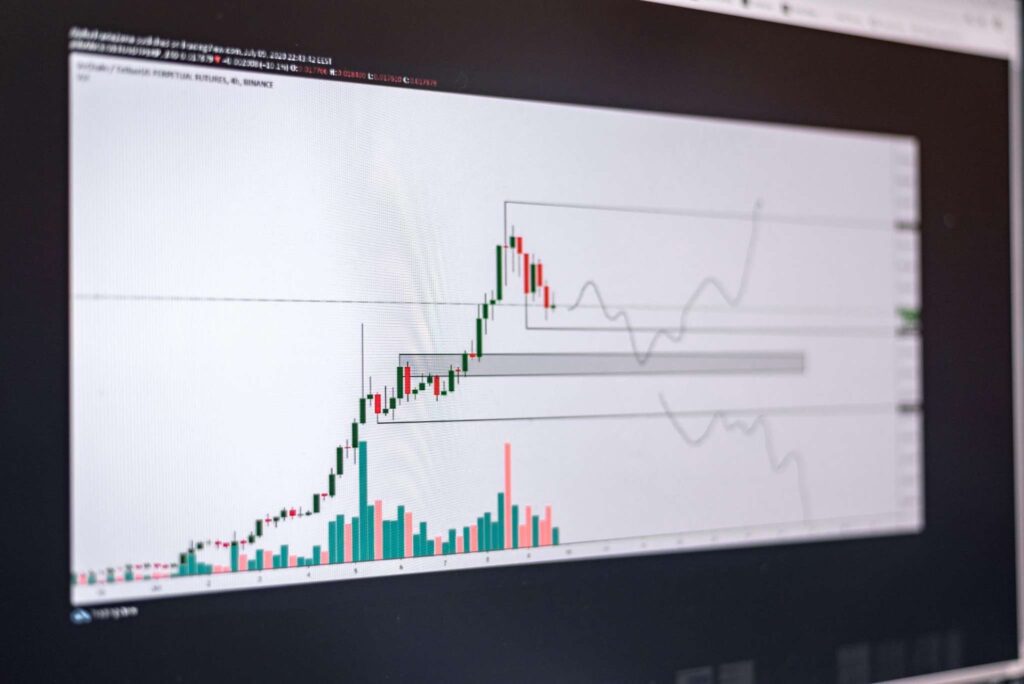I. Introduction
Momentum trading often appears more like a reactive response to market trends than a well-thought-out strategy. After all, the appeal of selling underperforming stocks and buying those on the rise is strong, but it contradicts the classic Wall Street principle of ‘buy low, sell high.’ So, why do traders use this type of trading? And does it make sense to use it? Read on to find out.
A. Setting the stage
Momentum trading, often known as ‘momo,’ is a trading strategy and not an emotional response. It capitalizes on the continuation of the existing trends of an asset price. It is one of the popular trading moves a lot of investors or traders prefer to use.
B. The importance of understanding momentum trading
Understanding momentum trading in investment is quite useful as it helps traders identify the securities that possess a strong price movement for the future, whether it is downwards or upward. Thus, they can enter the positions to make a profit from the momentum that continues to move in the same direction.
II. What is momentum trading?
If you want to incorporate momentum trading strategies in your investment moves then you must begin by learning what momentum trading is first. Without knowing what it is, you won’t be able to make the most of this trading strategy.
A. Definition and Core Concepts
To begin with momentum trading you must learn about its definition and core concepts. By definition, momentum trading is a trading strategy that aims to capitalize on the continuing trends in the investment market. In other words, it capitalizes on the ongoing momentum.
So, the core of this strategy is to enter market positions that show a strong movement in the same direction to benefit from the continuation of the trend directions and exit the market positions when the trends show any sign of reversing the trend.
B. Historical background
The emergence of the momentum trading trend can be traced back to the Victorian era, which is 1830s to 1900. Richard Driehaus is considered the father of momentum trading as he was the first to use the term. However, technically, he was not the true founder of this trading strategy as the concept of momentum trading or investing can be traced back to the nineteenth century when Charles Dow first observed that the stock price moves in trends.
Read More: Reasons to Choose Crypto Futures Trading on CoinSwitch Pro
III. Key principles of momentum trading
Knowing the definition is not enough; you should also learn about the key principles of the trading strategy. There are two primary or key principles of momentum trading: one is price momentum, and the other is volume momentum.
A. Price momentum
In price momentum, the momentum traders believe that if the price of a stock or share is witnessing a continuation in the same direction, then the trend will continue to move in that direction for a limited time, which they take advantage of.
B. Volume momentum
Another crucial principle of momentum trading is volume momentum. The volume of stock or share refers to the amount of interest it can offer to investors at a given point in time. Therefore, the rising volume momentum indicates that there will be a greater bullish or bearish movement. And if the volume decreases, it will have a reverse effect on the trend.
IV. Momentum indicators
There are several momentum indicators in the market that can help you identify market momentum and direction in the near future. Below, we will learn about these indicators in detail.
A. Relative Strength Index (RSI)
The first and widely used momentum indicator in the market is the RSI, or relative strength index. It is one of the most popular momentum indicators that is used in technical analysis. RSI measures the speed and magnitude of a security or stock’s recent price changes to identify the undervalued and overvalued conditions of the security’s price.
B. Moving averages
Moving averages, or MA, is another widely used technical indicator for determining market momentum. MA is used to smooth out market price trends by filtering the distractions of short-term price fluctuations that tend to mislead traders by indicating a false market price movement. For average intervals, moving averages can be constructed in various ways and employ different numbers.
C. MACD (Moving Average Convergence/Divergence)
MACD, popularly known as the moving average convergence/divergence indicator, is another momentum indicator that a lot of traders trust. MACD is also known as an oscillator indicator. It helps traders identify price movements/trends, figure out trend momentum, identify acceleration points, etc. to enhance the investment decisions. MACD is basically a collection of three times series calculated from historical price data and common price closing points.
D. Momentum oscillator
Lastly, the momentum oscillator is an indicator that measures the amount of price of a security that has changed over a given period of time. The formula of the momentum oscillator to derive market momentum is simple. Just divide the current price of a security from the price of the past period and then the quotient is multiplied by 100.
V. Strategies for momentum trading
There are several strategies you can take as a momentum trader for successful momentum trading. Below we will discuss some essential strategies for momentum trading.
A. Breakout strategy
The breakout strategy is one of the ideal strategies for momentum trading that most momentum traders use for successful momentum trades. In momentum trading, breakout strategy helps to identify stocks with the highest volume surges as this indicates a rise in institutional demand. However, initial breakout is prone to damage or loss. Therefore buying in the first pullback after the breakout is a more beneficial time.
B. Pullback strategy
Another common yet useful strategy for momentum trading is the pullback strategy. As the name suggests the pullback strategy is the opposite of the breakout strategy; it leverages from the pullback movements instead of breakout moments. The pullback in investment usually means a price declining movement from the highest point. This is a correctional move after a price surge, giving investors the opportunity to buy a security that is meant to rise further at a discounted rate.
C. Trend following
Lastly, you can also use trend-following strategies for momentum trading. Trend following strategy is mostly used to identify the price trends in the market. It primarily focuses on price actions while trading stocks. It allows traders to sell low on downtrends and buy high on uptrends.
Read More: What is the Long Short Ratio In Crypto Futures Trading?
VI. Tools and platforms for momentum trading
To make the most out of momentum trading strategies you need a proper platform and equipment. Here are some tools and platforms for momentum trading.
A. Trading platforms
To leverage momentum trading, you must select a suitable trading platform for your trades. There are many online platforms for momentum trading that you can use for your momentum trading. However, before you select any of these platforms figure out which platform has a higher customer rating, strong security, and user-friendly interface. Also, learn whether the platform has sufficient automation and auto-filtering options.
B. Analytical tools
You can also equip yourself with different analytical tools to make the most of your momentum trading strategies. Here are some common analytical tools you can consider using.
● MACD (Moving Average Convergence/Divergence)
● RSI (Relative Strength Index)
● ADX (Average Dictational Index)
● Cci (Commodity Channel Index)
VII. Risks and Challenges in Momentum Trading
Like any other trading strategy, momentum trading strategies also have their own risks and challenges.
A. Market volatility
Market volatility highly impacts the outcome of momentum trading. Momentum trading focuses on the continuing price trends of securities to invest in them. However, market volatility can impact the price trends dramatically that the momentum trading analysis may not identify which can lead to unwanted loss.
B. Overtrading
Solely depending on momentum trading strategies can also lead to overtrading, as it only focuses on market price movements and invests in stocks that indicate a continuous price or volume trend.
C. Emotional decision-making
Emotional decision-making is another common mistake in momentum trading. The momentum trading strategies depend on observing price fluctuations. Therefore, it can cause unwanted panic resulting in emotional decision-making.
VIII. Tips for aspiring momentum traders
If you are new to momentum trading you might feel confused about how to incorporate this strategy for the best. Here are some tips for aspiring traders like you to succeed with momentum trading.
A. Education and training
Momentum trading is an advanced trading strategy that requires proper education and training on the trade market and the price trends of the market. Without proper knowledge and information, you won’t be able to identify market momentum accurately to make investment decisions.
B. Practice with simulated trading
You can also participate in various simulated trading games offered by various online sources. These types of simulation games are great for boosting your practical knowledge of momentum trading and enhancing your trading skills.
C. Continuous learning and adaptation
Lastly, continuous learning and adaptation are a must if you want to leverage the benefits of momentum trading. Remember, the stock market is ever-evolving with new trends and dynamics, so continuous learning and adaptation to the new trends and tools is a must.
IX. Conclusion
Momentum trading is one of the most popular trading moves that many experienced traders leverage to enhance their trading strategies and earn profits.
In momentum trading the momentum traders figure out the securities with strong and stable price movement directions. Once they do this, they can enter positions that move in the same direction with the continuation of price trends. There are several indicators such as RSI and MACD that help to indicate market momentum.
Momentum trading is indeed a useful trading strategy that leverages market price trends to make successful investments. However, you must not forget that like any other trading strategy, it does come with several risks that you must eliminate or mitigate by involving other strategies, educating yourself, and keeping yourself updated.
FAQs
1. How can you learn momentum trading?
Learning momentum trading is easy; you can consult experts for trading or educate yourself using online sources.
2. What is momentum trading in simple words?
In simple words, momentum trading refers to the trading process that focuses on the continuing price trends of entered positions that are likely to follow the same detection to gain profit from the market movements.
3. Is momentum trading profitable?
Momentum trading is indeed profitable as it leverages market price trends. However, you can only profit from them when you have enough knowledge and expertise in them.
4. What are the keys to momentum trading?
The key to momentum trading is observing price movement trends and predicting the continuing price trends to make investments.








